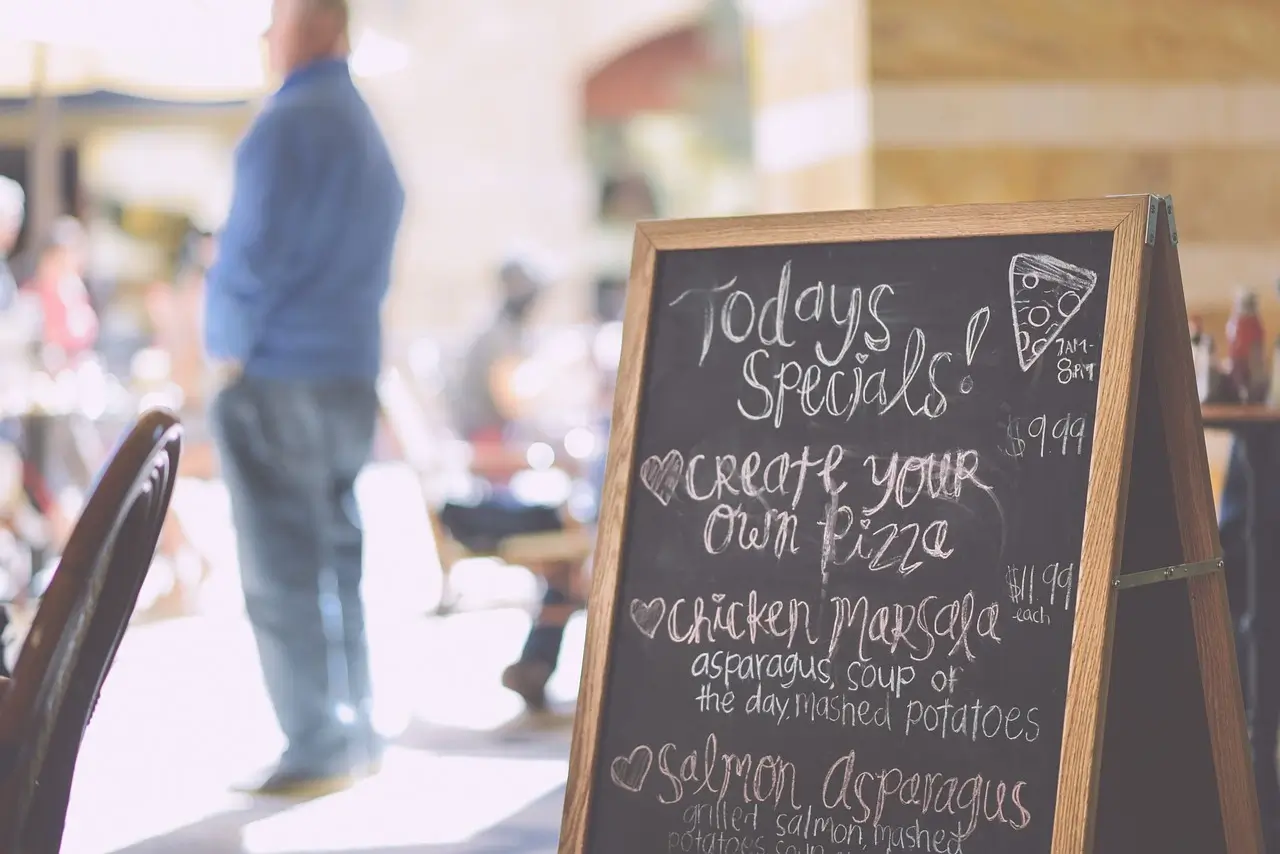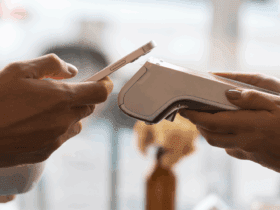Most restaurants have been forced to figure out ways to sustain and capitalize from the effects of Covid-19. One of the ways that restaurants do this is through menu engineering. A well-designed menu can promote dishes and boost a restaurant’s profitability. Restaurants have managed to adapt to this change, restructure their entire digital menu and promote it on their preferred social media pages and other online mediums.
According to Gallup Poll, it is said that an average consumer spends around 109 seconds navigating through a restaurant menu. A restaurant’s menu is the first impression consumers get on your restaurant. So, it’s important to make this an opportunity to entice your customers and stand out among the competition.
Learn how to use menu engineering tactics effectively by analyzing your profitability and popularity. This would create a fulfilling customer experience while gaining high-profit margins. This has resulted in restaurants not only succeeding in-house but also thriving online.
What Is Menu Engineering?
Menu engineering might seem like a new concept but it’s not. It is a growth-share matrix model developed by Boston Consulting Group. It helps identify which products should be given more priority. It was one of the first menu engineering models introduced back in the 1970s. Professor “Coach” Donald Smith of Michigan State University brought this idea to the restaurant industry 10 years later.
Restaurant menu engineering practices are used to evaluate the profitability and popularity of menu items by analyzing sales data and food expenditures. This is to see how these factors affect where you place food items on your menu. This helps restaurants to consider which meals to promote and to price their food items effectively.
It is said that about 40% of restaurants follow menu engineering but only 10% are doing it effectively. 90% of restaurants have the potential to improve their profitability.
Let’s Look At The Process Of Menu Engineering.
Process 1: Costing your menu
This is one of the most important steps in menu engineering. Costing the menu will help you identify your most profitable dishes. It is simply known as quantifying all your menu items to their exact cost. In terms of accuracy, one should note down the cost of all ingredients. Approximately 80% of restaurants do not cost their menus and another 5% cost their menus improperly. Costing your menu can be highly time-consuming but taking the time to do it right may offer you an advantage over 85% of your competitors.
Process 2: Categorizing menu items according to popularity and profitability
Divide your menu into sections and categories. Usually, a broad list of categories includes appetizers, starters/entrees, desserts, and drinks. Following that, break down and divide your categories into sections. You can also break down the beverage section as alcoholic and non-alcoholic. Try using a spreadsheet to arrange these categories and sections easily.
Once you’ve divided your menu into categories and sections, you should evaluate each menu item based on profitability and popularity. This will help determine what should be included, excluded and which items should be relocated to the most popular section of the menu. To make things easier, restaurants divide all their menu options into four quadrants such as (Plow Horses, Stars, Dogs, and Puzzles.)
- Stars – high profitability and high popularity
- Plow-horses – low profitability and high popularity
- Puzzles – high profitability and low popularity
- Dogs – low profitability and low popularity
Must Read: How to Manage your Business Online Reputation
Decide on what to do with the items in each quadrant. You’ll make judgments based on a mix of logic, reason, and intuition. Here’s how you should use it:
Stars – Make your stars stand out.
These are winning dishes! They should be kept. You may even consider a little price hike on your next menu update. Out of all four categories, these items will have the most impact on your bottom line due to their high popularity and profitability.
Plow Horses – Look for ways to make additional money with these services.
You know how to market these items. However, due to their poor profitability, you should consider revising them to increase the margin. This can be accomplished by raising the price, changing the ingredients, changing the portion size, or doing all of the above.
Puzzles – Figure out why some items aren’t performing and make required adjustments.
Puzzles are the items that you wish you could sell more of since they generate revenue for you. To enhance sales volume, consider promoting, rearranging certain products on the menu, or incorporating them into a campaign. Guests will not order an item if the description on the menu is not tempting enough so try using appealing food descriptions.
Dogs- De-emphasize or eliminate these components as needed for dogs
If you keep dogs on your menu, you’re throwing money away! These items must be identified and quickly removed from the menu. Whether it’s your chef’s special dish or a staff favorite, if your guests aren’t ordering it and it’s expensive to prepare, it’s time to get rid of it.
Process 3: Designing your menu
To highlight your most profitable dishes, it is vital to have a well-designed food menu. It’s more than just fonts and colors. So, make this an opportunity to entice your customers!
Visual Cues
Use visual cues if you wish to highlight your most selling items. Restaurants use visual cues when designing their menu such as, including pictures, placing an asterisk, and boxing out the texts on the menu. However, utilize these methods cautiously. They become less effective and more distracting when used more frequently.
Pricing strategy
Avoid listing your prices on the right side of your food menu down the column. This is a big no! This makes customers give more focus towards the price, not your food. This leads to them ordering a cheaper meal in the column. Try using the same type of font size and style to place pricing two spaces after the end of the item description.
Description strategy
Menu descriptions on your menu are critical for improving customer experience, generating emotion, and establishing long-term customer relationships. They can even trigger an increase in buying decisions by 45%. Ensure your menu descriptions connect to the senses of your customers and appropriately reflect the food’s quality. You’ll most likely see a 55% rise in conversion rates. The best menus for attracting guests’ attention are those that provide detailed information about their products.
Must Read: Why are QR Code Menus a Hype these Days
List order strategy
Whenever we talk of menu engineering, we usually think of the behind-the-scenes planning that goes into creating a restaurant menu. However, a restaurant’s staff may also have an impact on what customers buy. They’re the ones that engage with visitors daily. Teach them the menu items to sell, and they’ll be able to assist customers in selecting the most profitable dishes.
Process 4: Give training to your staff
Whenever we talk of menu engineering, we usually think of the behind-the-scenes planning that goes into creating a restaurant menu, but a restaurant’s staff may also have an impact on what customers buy. They’re the ones that engage with visitors on a daily basis. Teach them the menu items to sell, and they’ll be able to assist customers in selecting the most profitable dishes.
Process 5: Now it’s time to check your restaurant menu
You’ll be geared up to test your new menu after you have recorded, analyzed, and constructed it. Restaurants use a method called split testing.
Split testing a menu entails making minor changes to the menu and comparing it to a prior version. Changes that enhanced profitability or sales are kept, while those that had a negative impact are discarded. These small adjustments may indeed build up to large profit increases over time.
Menu engineering is an ongoing continuous process. This is not a one-time event where ingredients become more costly as time passes, culinary trends come and go, and customer tastes vary from time to time. Therefore, maximum profitability in a restaurant is not impossible to achieve. You’ll create bottom-line profit faster than any other campaign if you let your menu work for you, you would spare your whole staff from future frustration.
It’s time you put all these learnings into work. Try out Applova Free Digital Menus to create, customize and update your digital menus in minutes. Customize your branding to reflect your restaurant’s tone and style, swap backgrounds, select color themes, and even upload your own logo.
Add, remove and organize products and categories with ease. You can also add and edit product descriptions and upload images of each dish or beverage. Applova’s dynamic QR code also allows for limitless, real-time price updates and menu item availability or substitutions. This way your customers will always have access to accurate and current information.
Applova Free Digital Menu is FREE FOREVER. So, what are you waiting for? Entice your customers with a well-engineered QR Menu and increase customer engagement and go digital!
Check out a sample menu here and sign up now!











Leave a Reply